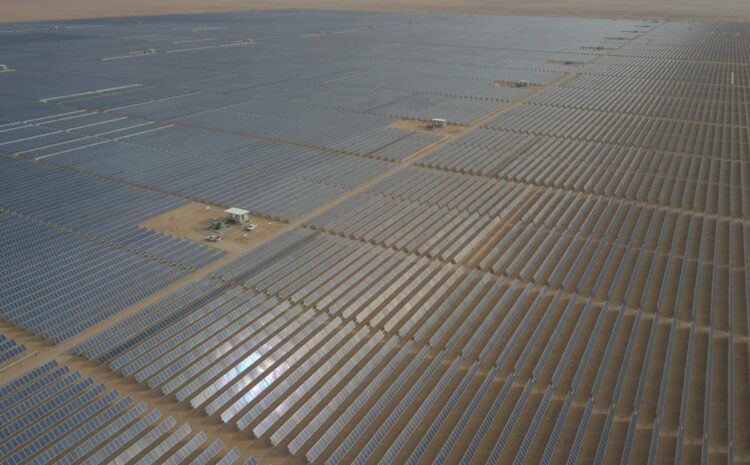Solar PPAs viable in Saudi Arabia at prices above $26.10/MWh

Saudi scientists have determined the current price threshold for power purchase agreements (PPA) that could make large-scale PV and wind power projects viable in Saudi Arabia. They incorporated data from the 300 MW Sakaka solar farm and four potential utility-scale PV project sites.
Researchers at King Abdulaziz University have conducted a techno-economic analysis for utility-scale wind and solar plants in Saudi Arabia and have found that current tariffs make projects economically unviable.
The scientists conducted their analysis with the System Advisor Model (SAM), which is a performance and financial model designed to estimate the cost of energy for grid-connected power projects. They also used a Support Vector Machine (SVM) algorithm based on machine learning to assess global horizontal irradiation (GHI), wind speed, as well as other weather parameters at different locations throughout the country.
Join SunRise Arabia Clean Energy Conference in Riyadh on Jan. 31, 2024, and find out more about the Saudi PV market
They also used the Weighted Linear Combination (WLC) method, which is a decision rule to derive composite maps using Geographic Information Systems (GIS), in addition to conducting a land suitability analysis. They said this facilitated the identification of four “optimal” locations for large-scale solar farms in Tabuk, Al Madinah, Makkah, and Riyadh provinces, as well as other suitable locations for wind power in Al Madinah, Makkah, Riyadh, and Eastern provinces.
“The analysis also identified one location in Al Jouf province suitable for hybrid systems combining solar PV and wind energy,” they said.
The researchers added that their assessment considered land use, topography, proximity to existing infrastructure, environmental constraints, capital costs, operation and maintenance (O&M) costs, energy production potential, grid integration considerations, and tilt angle optimization.
After completing their land suitability assessment, the researchers proceeded with a techno-economic analysis of the potential project considering annual energy output, capacity factor, energy yield, performance ratio, and levelized cost of energy (LCOE).
Their analysis included information from two existing facilities in Saudi Arabia – the 300 MW Sakaka solar plant and the 400 MW Dumat Al Jandal wind farm.
“The Sakaka solar PV plant operates under a 25-year PPA with an electricity price of $23.40/MWh, while the Dumat Al Jandal wind farm has a 20-year PPA with an electricity price of $21.30/MWh,” the researchers said, acknowledging that technical and financial details for the plants are not fully available.
The simulations showed that these PPA prices now allow the owners of the Sakaka and Dumat Al Jandal plants to achieve a positive net present value (NPV).
“The negative NPV results indicate that the projects are not economically viable at the current PPA prices,” the researchers said. “Increasing the PPA price could potentially enhance the profitability of these projects.”
They said that to achieve zero NPV values, the other identified sites for solar deployment should host projects requiring PPA prices ranging from $26.10/MWh to $29.30/MWh.
“Sensitivity analysis of PPA rates indicated that solar PV, wind energy, and hybrid solar PV-wind technologies are economically feasible in SA at PPA rates above $32.8/MWh, $26.1/MWh, and $50.6/MWh, respectively,” they concluded.
They introduced their findings in “Potentials and opportunities of solar PV and wind energy sources in Saudi Arabia: Land suitability, techno-socio-economic feasibility, and future variability,” which was recently published in Results in Engineering.